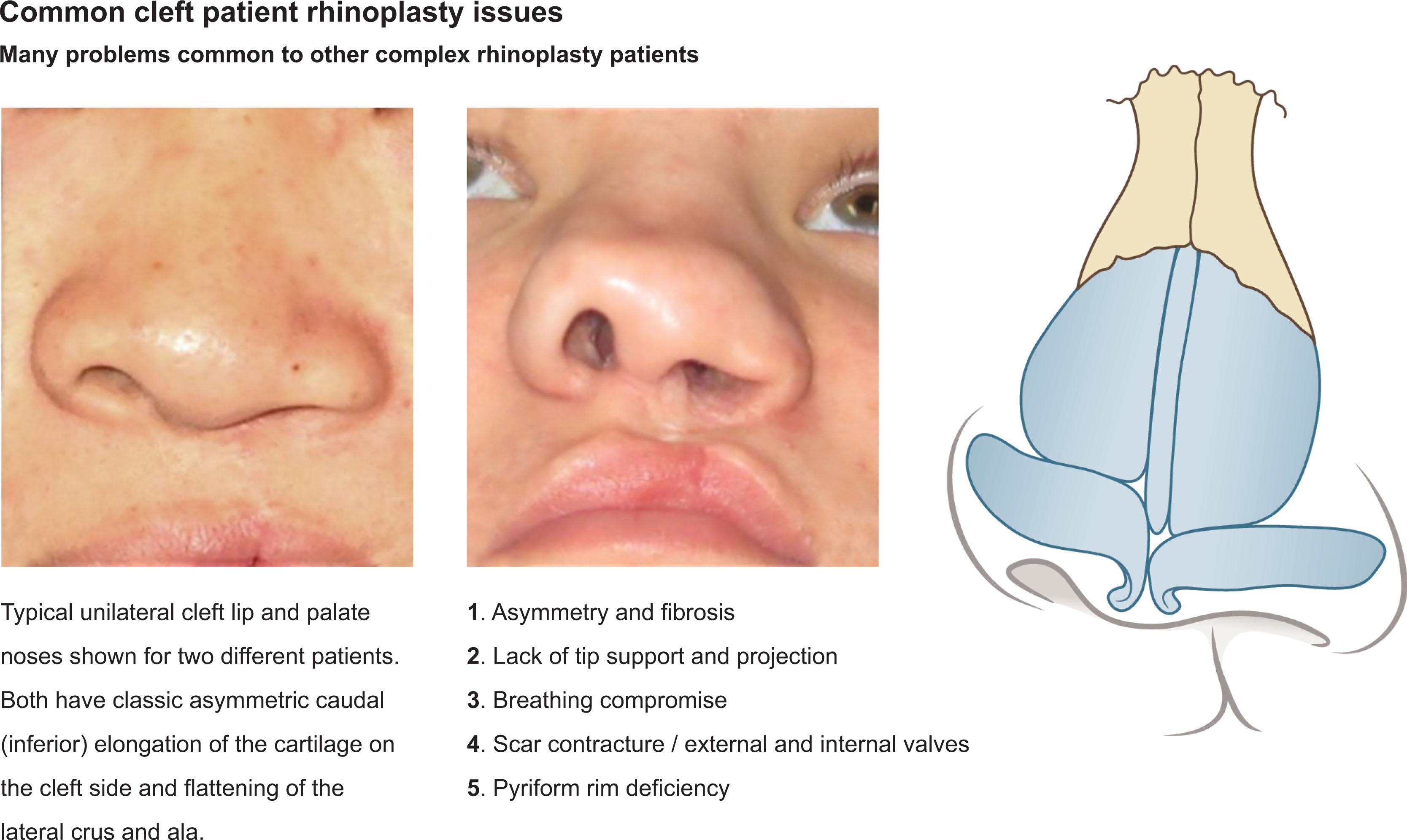Physical Address
304 North Cardinal St.
Dorchester Center, MA 02124
Cleft lip and palate (CLP) is the second most common congenital defect in the United States—affecting approximately 7,000 infants annually. CLP is caused by a variety of environmental and genetic factors. Due to hypoplastic or absent tissues, as well as the accumulation of scar tissue from previous surgeries, patients with CLP are likely to have functional deficiencies and cosmetic abnormalities of the nose. CLP patients undergo rhinoplasty to address these concerns. This surgery is complicated by the patient-specific anatomical deformities of the skin, bone, cartilage, and mucosal lining. Additionally, the surgical procedure focuses on the nose, which is in the middle of the face, making even slight abnormalities perceptible. To achieve the desired outcome, a functioning and aesthetic nose, it is imperative to address each of these tissues’ unique anatomical deformities. Due to the complexity and heterogeneity of CLP defects, there is no established surgical modality. CLP patients often undergo a series of rhinoplasty surgeries starting with the primary repair, proceeding to the intermediate repair, and ending with the secondary/definite repair. The focus of this chapter is to detail the incisions and techniques associated with secondary/definite repair of CLP defects.
There are two major types of CLP, unilateral and bilateral, which have markedly different anatomies. Both can range in severity. A unilateral cleft lip nasal deformity tends to contain many asymmetries, while a bilateral cleft lip deformity tends to have increased tissue loss, a severely affected columella, and reduced projection of the nasal tip ( Fig. 74.1 ).

Unilateral CLP patients typically present with a horizontally oriented nostril due to an elongated lateral crus and a shortened medial crus. Collapse of the vestibule on the same side as the cleft decreases nasal tip projection. There is often hypoplasia of the premaxilla at the cleft site that leads to decreased nasal sill. Also common is the deviation of the nasal septum. The septum will deviate to the cleft side posteriorly and to the non-cleft side caudally.
Bilateral CLP patients often present with deformities that include a shortened columella with a wide nasal labial angle and a downwardly rotated nasal tip with insufficient projection. A horizontally oriented nostril is common due to an elongated lateral crus of the lower lateral cartilages (LLCs) and a shortened medial crus. In these patients the nasal septum is generally midline with a minor deviation toward the less severe side. There is also a webbing of the vestibule with nasal flare and constricted internal and external nasal valves. Due to a dislocation of muscle attachment, patients can have wide nasal ala.
CLP nasal repair occurs in multiple stages termed primary, intermediate, and secondary/definitive. Prior to surgery, nasoalveolar molding (NAM) can be used to help shape the cartilage of young patients, as their nasal cartilages are still soft and elastic due to circulating maternal estrogen.
The primary repair is done concurrently with the cleft lip repair when the patient is roughly 3 months old. The same incisions used for cleft lip repair can be used for the rhinoplasty. Its goal is to close the nasal floor and sill by adjusting the position of the lower lateral cartilage. During this procedure, the nasal septum is connected to the anterior nasal spine caudally. Surgery on the nasal tip is normally done in later surgeries to avoid affecting nasal growth and development.
The intermediate repair is typically done between the ages of 5 to 10 years and largely addresses the shortened columella. It is not always needed. Multiple techniques are used during the intermediate repair including a V to Y approach, rotation of the nostril rim skin, and a forked flap. Nasal tip asymmetries can be addressed at this stage whether they had not been previously addressed or are residual from prior surgeries. Septum work or grafting should be withheld until full nasal growth.
The secondary/definite repair is done when the nose reaches its full size and development, between the ages of 14 and 16 for females and 16 and 18 for males. This can be further delayed if skeletal deficiencies of the maxilla need to be addressed. This stage corrects both functional and aesthetic deficiencies that were not addressed in prior surgeries, as well as scar tissue and secondary deformities that arose from previous surgeries.
Secondary repair of the nose in CLP patients is almost always done via an open approach. This technique gives proper exposure and access to the multiple areas that need repair. This allows for evaluation and management with precise dissection, graft placement, and suturing.
Become a Clinical Tree membership for Full access and enjoy Unlimited articles
If you are a member. Log in here